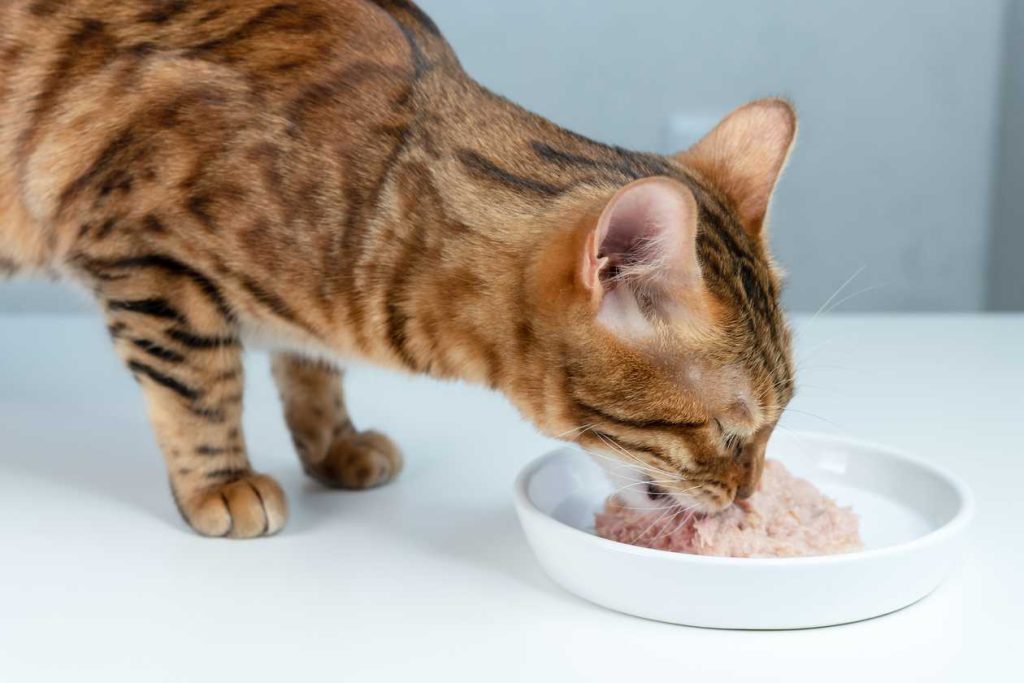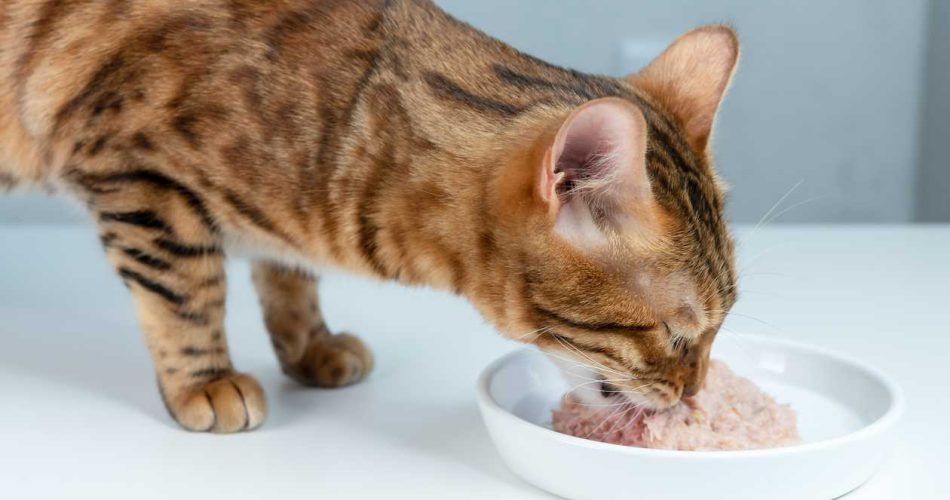Choosing the best cat food for your pet’s health can feel overwhelming with the wide variety of options available on the market. However, by considering a few key factors, you can select a food that will meet your cat’s nutritional needs and promote overall well-being. Every cat has unique requirements based on age, activity level, and health, so understanding these factors is crucial when making a decision. In this article, we will guide you through the process of selecting the best cat food for your pet’s health.

1. Understand Your Cat’s Nutritional Needs
Cats are obligate carnivores, meaning their diet should be primarily made up of animal-based proteins. Unlike humans or dogs, cats cannot efficiently convert plant-based proteins into the essential amino acids they need, such as taurine, arginine, and methionine. When selecting cat food, look for a product that lists a high-quality animal-based protein, such as chicken, turkey, beef, or fish, as the first ingredient. Protein is essential for muscle growth, tissue repair, and overall health, making it the most important component in your cat’s diet.
Additionally, ensure that the food includes essential fatty acids like omega-3 and omega-6, which are vital for skin health, coat condition, and joint support. A high-quality cat food should also provide necessary vitamins and minerals, such as vitamins A, D, E, and B, which play crucial roles in maintaining immune function, bone health, and metabolism.
2. Choose the Right Food Based on Life Stage
Just as humans have different nutritional needs at different life stages, so do cats. The best cat food for your pet’s health will depend on their age, weight, and activity level. Kittens, for instance, need more calories, protein, and fat to support their rapid growth and development. Look for kitten-specific formulas that are rich in these nutrients.
Adult cats, on the other hand, require a balanced diet with appropriate calories to maintain their weight and energy levels. Most adult cat foods are formulated to provide balanced nutrition, but it’s important to choose one that matches your cat’s activity level. Active cats may need higher protein and fat levels, while more sedentary cats may benefit from a lower-calorie option to prevent obesity.
For senior cats, look for foods that are easy to digest and that include nutrients like omega-3 fatty acids, antioxidants, and joint-supporting ingredients like glucosamine and chondroitin. As cats age, they may become more prone to arthritis, kidney disease, and cognitive decline, so foods that support these areas of health are beneficial.
3. Consider the Ingredients
When evaluating cat food, always check the ingredient list. Ideally, the first ingredient should be a named animal protein (such as chicken, beef, or fish). Avoid foods that use vague terms like “meat by-products” or “animal digest,” as these are not specific and may indicate lower-quality sources of protein. Whole grains such as brown rice and oats can be acceptable sources of carbohydrates, but some cats with sensitive stomachs or food allergies may benefit from grain-free formulas. Cats with food sensitivities may also benefit from single-protein-source foods, which contain only one animal protein to reduce the chance of allergic reactions.
Artificial additives, colors, and preservatives should be avoided whenever possible, as these can be harmful to your cat’s health. Look for natural preservatives like tocopherols (vitamin E) or ascorbic acid (vitamin C), which are safer options. Also, check for the presence of fillers like corn, wheat, and soy, as these can be harder for cats to digest and may contribute to weight gain or allergies.

4. Choose Wet vs. Dry Food
Another consideration is whether to feed your cat wet food, dry food, or a combination of both. Both types of food have their benefits, so the best choice will depend on your cat’s specific needs.
Wet food is higher in moisture, which is important for cats, as they are naturally low drinkers. Wet food can help prevent urinary tract problems and dehydration, especially for cats that are prone to kidney disease or other urinary issues. It’s also typically more palatable for picky eaters. However, wet food can be more expensive and may require refrigeration once opened.
Dry food, on the other hand, is convenient, less expensive, and can be left out for longer periods. It also helps clean your cat’s teeth as they chew. However, dry food is lower in moisture, which may not be ideal for cats that are prone to urinary tract issues. If you feed dry food, ensure your cat has constant access to fresh water.
Many pet owners choose to feed their cats a combination of both wet and dry food to offer variety, promote hydration, and provide different textures.
5. Special Diets for Health Concerns
If your cat has a specific health issue, such as obesity, allergies, kidney disease, or diabetes, it’s important to select food that caters to these specific needs. Many pet food brands offer specialized diets formulated to support cats with health concerns. For example:
- Weight management: If your cat is overweight, look for food that is lower in calories but still provides balanced nutrition. Foods with higher fiber content can help keep your cat full longer.
- Food sensitivities and allergies: If your cat has food allergies or sensitivities, consider a limited-ingredient diet with a single protein source and no grains or fillers.
- Kidney disease: For cats with kidney disease, foods with reduced phosphorus and increased omega-3 fatty acids can support kidney health.
- Diabetes: Diabetic cats may benefit from food with a low glycemic index and higher protein content to help manage blood sugar levels.
Always consult your veterinarian before switching to a special diet to ensure it’s appropriate for your cat’s specific condition.
6. Read Reviews and Choose Reputable Brands
Choosing a reputable brand is essential when selecting cat food. Look for brands that have undergone feeding trials and are backed by veterinary nutritionists. Brands with a good reputation for quality control and sourcing ingredients responsibly are more likely to produce safe, nutritious food for your cat. Online reviews and recommendations from other cat owners can also provide valuable insight into a brand’s quality and customer satisfaction.

7. Consult with Your Veterinarian
Finally, always consult your veterinarian before making any major changes to your cat’s diet. Your vet can provide personalized recommendations based on your cat’s health, age, and lifestyle. They can help you understand if your cat has specific dietary needs or health issues that require special consideration when selecting food.
Conclusion
Choosing the best cat food for your pet’s health requires careful consideration of factors such as age, activity level, health conditions, and ingredient quality. Ensure that the food you choose is rich in high-quality animal-based protein, contains the right balance of fats, carbohydrates, vitamins, and minerals, and is suited to your cat’s life stage. Whether you opt for wet food, dry food, or a combination of both, the right diet can significantly improve your cat’s health, energy levels, and overall well-being. With the right food and veterinary guidance, your cat can lead a long, happy, and healthy life.
